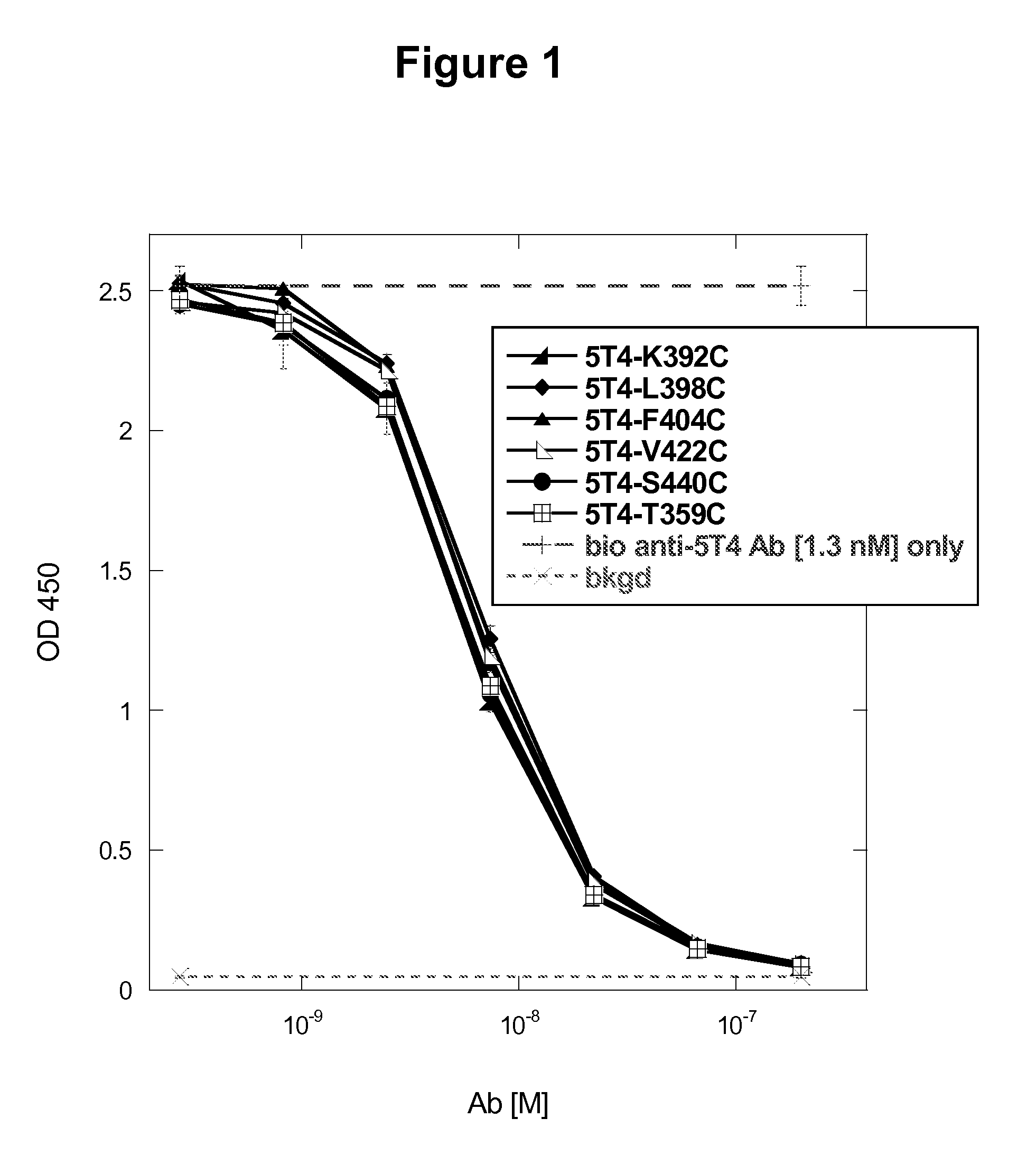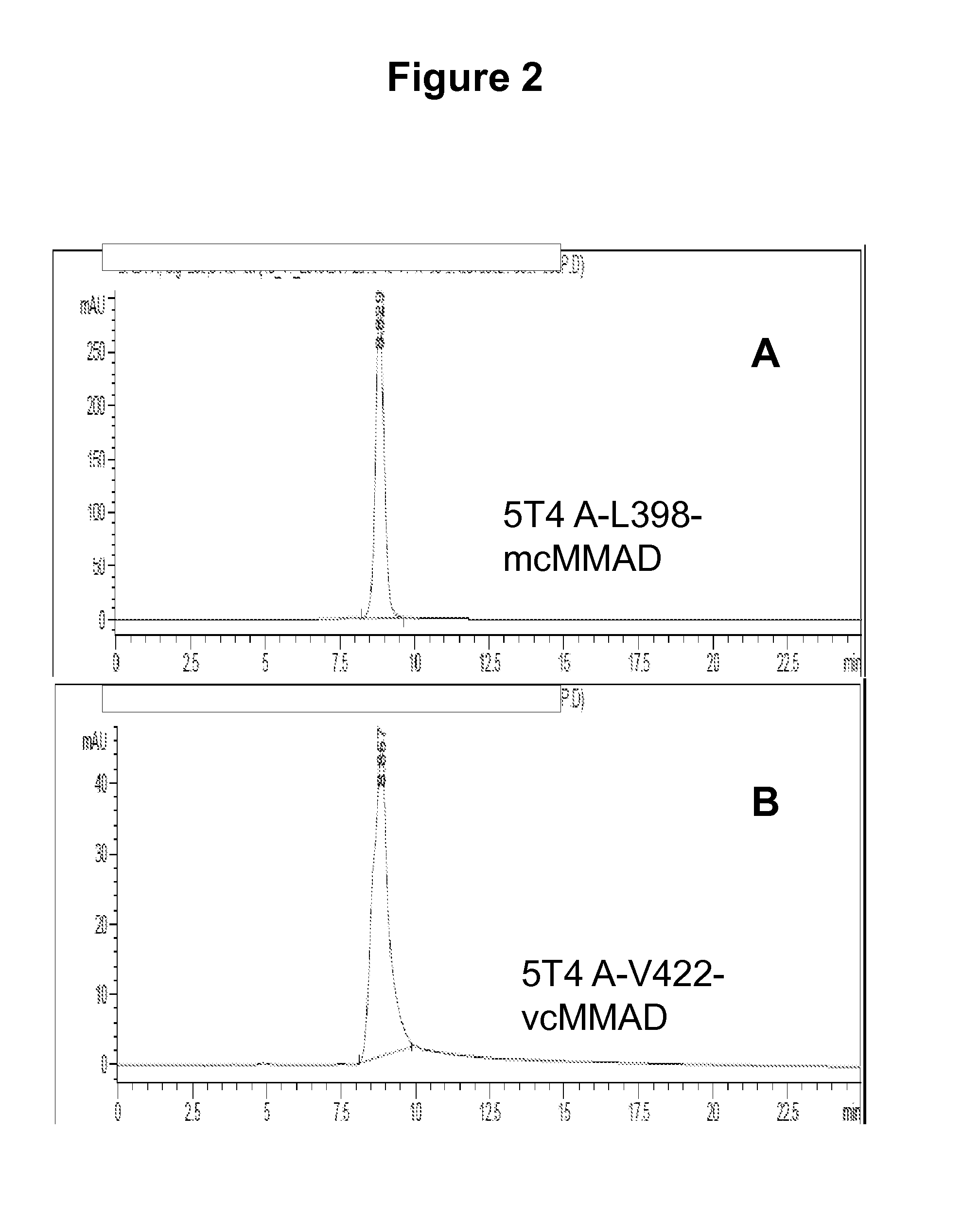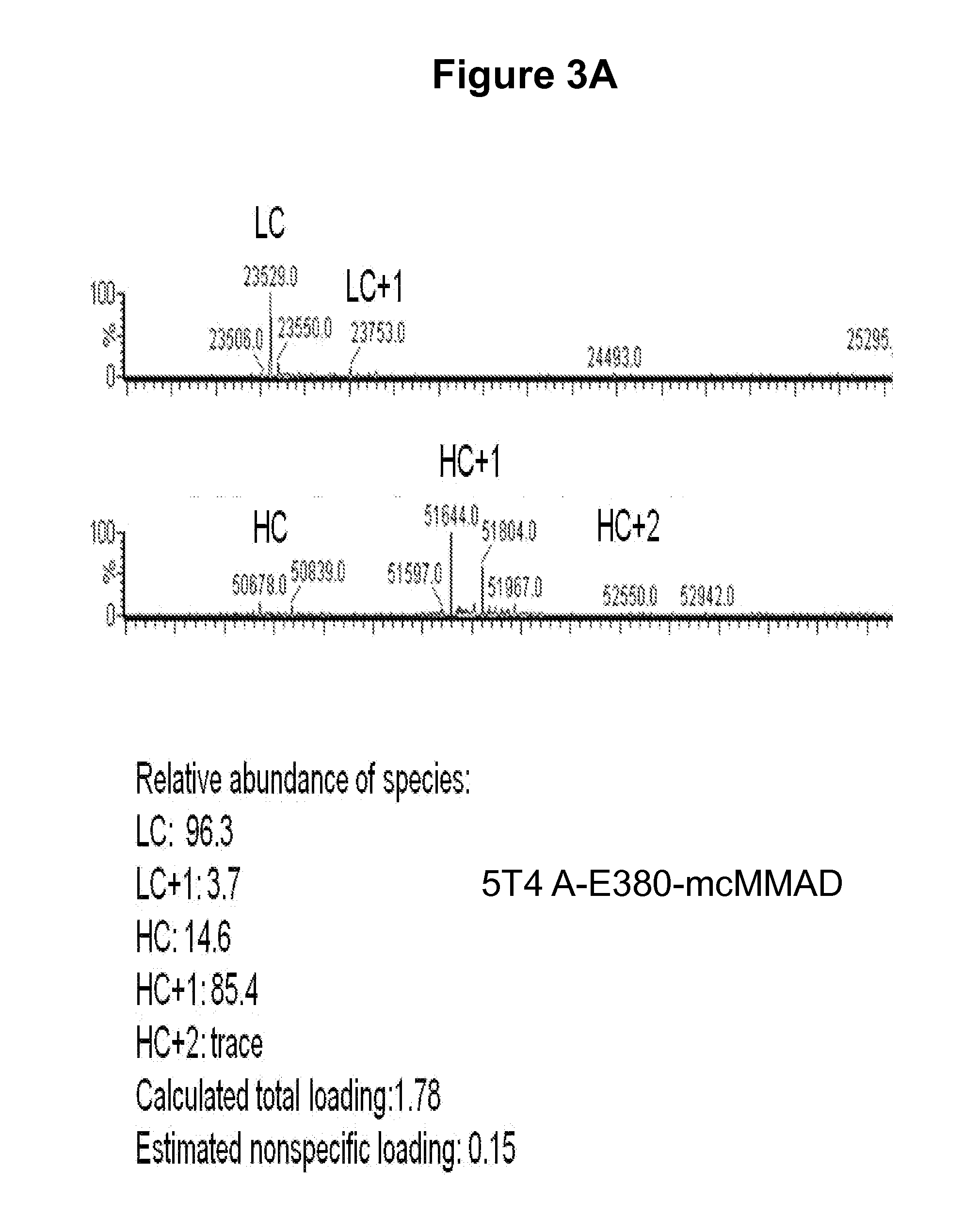Engineered Antibody Constant Regions for Site-Specific Conjugation and Methods and Uses Therefor
a constant region and antibody technology, applied in the field of antibodies, can solve the problems of inability to control the specificity of inability to express specific antibodies, and inability to demonstrate unacceptable toxicity and or lack of specificity for cancer cells over non-cancer tissues
- Summary
- Abstract
- Description
- Claims
- Application Information
AI Technical Summary
Benefits of technology
Problems solved by technology
Method used
Image
Examples
example 1
Engineering Reactive Cysteines into human Antibody IgG1-Fc Region for Site-Specific Conjugation
[0578]Conventional conjugation strategies for antibody drug conjugates (ADCs) rely on randomly conjugating the payload to the antibody through lysines or cysteines. The methods exemplified herein produce a homogeneous population of ADCs comprised of species with a defined molar drug:antibody ratio (DAR). The data disclosed herein demonstrate that site-specific conjugation of toxic payloads to antibodies using reactive amino acid residues at these novel positions yields homogeneous ADC preparations with uniform stoichiometry resulting in improved pharmacokinetics, biodistribution and safety profile of the conjugate. The data disclosed herein demonstrate an approach whereby reactive cysteine residues were engineered into the antibody constant regions (e.g., heavy and light chain constant regions) to facilitate generation of homogeneous ADCs with drug:antibody ratio of either 2 or 4 and the s...
example 2
Generation of Double-Cysteine Engineered Anti-5T4 Antibodies
[0594]Nine combinations of two reactive cysteine residues were introduced into the anti-5T4 antibody comprising human IgG1. The amino acid sequence of the wild type full-length heavy chain of this antibody is set forth in FIG. 17A (SEQ ID NO:83) and the amino acid sequence of the full-length kappa light chain of this antibody is set forth in FIG. 17B (SEQ ID NO:84). The mutations to substitute the relevant wild type amino acid to the novel engineered cysteine in the heavy chain constant region were introduced using the same over-lapping PCR mutagenesis method as described previously in Example 1. Introduction of two reactive cysteines into each IgG1 Fc region thus provided four novel cysteine conjugation sites that would yield ADCs with a drug: antibody ratio (DAR) of 4 for each antibody (i.e., 2 reactive novel cysteines×2 heavy chain Fc regions per antibody molecule). The relative positions of the engineered reactive cyste...
example 3
Generation of Anti-Her2 Single and Double Cysteine Engineered Antibody Variants
[0597]To demonstrate that these selected positions for engineering reactive cysteines can be applied to other antibodies regardless of antigen-binding specificity, four (4) single and nine (9) double cysteine residues were engineered into the IgG1 Fc region of an anti-human Her2 antibody. The amino acid sequence of the full-length heavy chain of the anti-Her2 antibody is show in FIG. 17C (SEQ ID NO:85) showing the wild type IgG1 Fc region without mutations (lower case letters). The amino acid sequence of the full-length light chain of the anti-Her2 antibody is show in FIG. 17D (SEQ ID NO:86) showing the wild type Cκ region without mutations (lower case letters). The positions of the cysteine mutations introduced are set forth Table 11. The nucleic acid encoding the anti-Her2 antibody human IgG1 constant region was removed from the vector by restriction enzyme digestion and replaced with a nucleic acid enc...
PUM
| Property | Measurement | Unit |
|---|---|---|
| Cytotoxicity | aaaaa | aaaaa |
Abstract
Description
Claims
Application Information
 Login to View More
Login to View More - R&D
- Intellectual Property
- Life Sciences
- Materials
- Tech Scout
- Unparalleled Data Quality
- Higher Quality Content
- 60% Fewer Hallucinations
Browse by: Latest US Patents, China's latest patents, Technical Efficacy Thesaurus, Application Domain, Technology Topic, Popular Technical Reports.
© 2025 PatSnap. All rights reserved.Legal|Privacy policy|Modern Slavery Act Transparency Statement|Sitemap|About US| Contact US: help@patsnap.com



